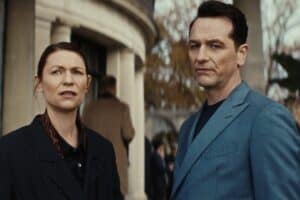Wimpie Ackermann's career has taken him to weird, wonderful and exotic locations. Scary ones, too.

Director of photography and cinematographer Wimpie Ackermann has told thousands of tales.
Few shows of substance in South Africa have not made use of Wimpie’s craft. He is also booked frequently to work on commercials, features, and tele-serials.
On set, Wimpie speaks a visual language, imagines shots and executes them accordingly. He is living his dream and, he believes, his destiny. Even when he left the film industry for a few months, it reeled him back in eventually.
He left film to pursue commercial diving. But after helping out on a shoot one day, his aspirations of a life undersea instead turned into the ability to film under water. Behind the camera was where he belonged.
‘A nine-to-five job just wasn’t for me’
His fascination with the media industry started at an early age. When he was nine years old, to be exact. Wimpie remembers when he saw technicians at the State Theatre prepare for a production, the cabling, the giant screens and the lighting.
The bug bit. The rest, history. He says: “My dad wanted me to become something else, but a nine-to-five job just wasn’t for me.”
Wimpie’s break came when he was called up for national service. It was during the bad old days when young men were conscripted to serve in the armed forces for two years. Wimpie’s unit made videos for the army.
Says Wimpie: “I was hungry, I wanted to do it, all of it, as much as possible.” This is where he was afforded the time and equipment to learn and study his artistry. He also completed his college education while in service.
Later, he was transferred to the Air Force where he spent months filming bomb tests in the air, from the cockpit of a Mirage 3. It was a demanding job that always required fully a flight-fit physical condition.
“It was also highly classified work at the time, but I was having the absolute time of my life,” he says.
In fact, he fell in love with his job so much that he signed onto the permanent force and carried on filming for the Air Force for another seven years.
TV career
When he finally hung up his wings for the last time, Wimpie moved into the private sector where he’s been filming ever since. His visual signature has been on shows from Top Billing through to Bravo! and Carte Blanche.
Wimpie’s career has taken him to weird, wonderful and exotic locations. Scary ones, too. But filming the late opera star Luciano Pavarotti is a moment he would never forget. A trip to Milan, Italy was arranged specifically for the interview.
He remembers: He was well prepared for the star and set up everything as per usual. Until Pavarotti walked in.
“There are normally three lights in a room for an interview. But Pavarotti walks in, tells me to move a light smack bang in front of his face. Then he tells me to turn the other two off.”
At this point, said Wimpie, the lighting had turned into the most uncomplimentary setup possible. “It was just horrible.”
But it got worse. Pavarotti wanted him out of the room. Wimpie was only allowed to press record and hope for the best while the presenter interviewed the singer sans any support or anyone making sure that it was being filmed.
“My stamina is often challenged. Equipment has become lighter over the years, carrying around tripods, cameras and other gear, chasing baddies down a street or spending hours filming a scene. Enduring a ten-hour workday is physically demanding.” He goes to a chiropractor regularly.
He is passionate about the language he speaks, that of the moving picture.
Wimpie is part of the South African Society of Cinematographers. “That kind of recognition is humbling,” he says.
PROFILE: Herman Mashaba – An unapologetic capitalist crusader






